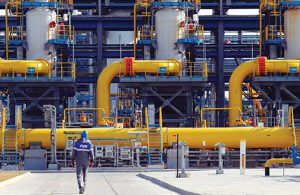European ministers pulled off what one diplomat called a miracle in July when they took just six days to agree to slash gas demand. Ever since, the bloc’s timelines have been slipping, and it now looks unlikely key new measures will be in place for winter.
Ministers set another new deadline, and now aim to clinch a deal on the latest batch of proposals to tame energy prices on November 24 — well into the heating season. But even if they manage it, key measures like a new market benchmark won’t kick in until the spring. Plans for price caps remain mired in technical details and political
wrangling. The market is giving policymakers a breather: there’s a glut of gas in Europe right now as efforts to bring in shiploads of LNG have coincided with unusually warm weather. But as the risk of a full-blown energy crisis recedes, so does the impetus to act.
“The commission should deliver the remaining parts of the puzzle,†said Jozef Sikela, industry minister for the Czech Republic, which holds the EU rotating presidency. “The game is not over and because the game is not over, we need to have an emergency measure regardless of where we are currently.â€
Back in July, as Moscow squeezed gas supplies and prompted a rethink of European energy policy, the bloc agreed a 15% voluntary target to cut demand, with an option of making it mandatory if needed. The EU has since moved to allow governments to cap profits and revenues of energy companies and funnel the proceeds to consumers.
Those were the easy measures. The trickier ones — with the greatest potential impact — are still stuck in diplomatic discussions, as member states accuse the commission of foot dragging.
The key question now is whether the bloc can come up with a cap on gas prices. One idea gaining traction is a dynamic price corridor on the key Dutch Title Transfer Facility and other hubs. Energy Commissioner Kadri Simson signaled it may be possible to come up with a proposal on this measure ahead of the November 24 meeting. That would be just the start of weeks of process.
“The Commission will swiftly work on the details,†she said at a press conference.
The other cap in the mix is one to limit the price of gas used in electricity generation, which is backed by a vociferous group of member states. But the Commission released a document highlighting a number of challenges the plan would pose — such as how to stop spurring gas demand and electricity flowing to countries outside of the European Union.
Another challenge is that some diplomats think it’s not possible to have both types of price caps implemented at the same time. At several EU meetings, even the definition of a price cap has been left deliberately vague, and some countries still can’t agree on what it should mean.
“There are about 15 member states which some time ago argued together to interfere more strongly in the market, though the 15 have different ideas when they look at how to do this exactly,†said Dutch Energy Minister Rob Jetten. “We need to avoid hasty decisions.â€
—Bloomberg
 The Gulf Time Newspaper One of the finest business newspapers in the UAE brought to you by our professional writers and editors.
The Gulf Time Newspaper One of the finest business newspapers in the UAE brought to you by our professional writers and editors.
